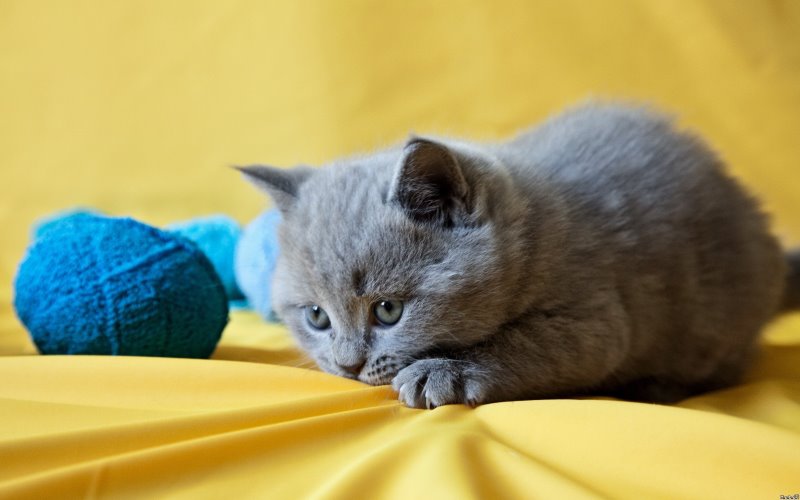Green diarrhea in the kitten indicates a violation of the microflora, which, most likely, is complicated by the presence of pathogenic microbes. The cause of such a pathology may be infectious infection, allergy, the reception of antibiotics. You can help the pet with the help of special drugs and diet.
Contents
Description of pathology
Diarrhea is associated with accelerated intestinal peristalsis, which occurs when irritation of the intestine. Symptoms are liquid stool, frequent bowel movement or a single fluffy liquid stool. Diarrhea can be acute or chronic. Diarrhea is one of the bright symptoms of a variety of diseases, the presence of parasites, infections and other disruptions in the functioning of your pet’s body. In appearance and other characteristics of faeces, you can determine the origin of the disease itself.
Such a shade of feces is a rather rare phenomenon. A kitten has diarrhea of green color if the pathogen microflora develops in the intestine. When infected, the digestive process is disrupted, since the intestinal mucosa is damaged by bacteria. The putrefactive microorganisms start to act, and the fermentation of food develops. Because of the process of fermentation, the feces acquire a green tint.
Causes of diarrhea
The cause of the development of pathogenic microflora may be several:
- Serious disease like salmonellosis, dysentery, amebiasis. In this case diarrhea becomes so powerful that the kitten can die in a matter of hours from severe dehydration. There is also a strong temperature increase (2-3 ° C).
- Reception of antibiotics. With prolonged intake of antimicrobials, the natural microflora is destroyed. Therefore, after the appearance of green feces, it is necessary to stop taking medication. And then you need to start to maintain the intestinal microflora.
- Incorrect feeding. These are not food green dyes (they are digested in the intestines). This includes a monotonous imbalance in vitamins, which results in a decrease in the protective capacity of the intestine (microbes penetrate), and the number of natural microorganisms decreases (due to a vitamin “hunger strike”).
- Absence of lactobacilli. Because of their small amount of lactose intolerance, which is especially often found in small kittens. In most cases, this phenomenon is temporary. But if necessary, you can give the kitten probiotics containing lactobacilli.
There are other causes of diarrhea (not green):
- Different parasites.
- Allergy to food or medicine.
- Strong stress in the animal.
- Poisoning by food.
- Cancer.
- Inflammatory processes.
- Intestinal obstruction.
- Diseases of the gastrointestinal tract of various origin.
Other symptoms
When infecting or breaking the intestinal microflora in kittens in the case of green diarrhea the following phenomena can be observed:
- decreased activity, weakness, apathy;
- weight loss;
- When defecating a pet may experience pain and discomfort;
- decrease in appetite (up to the total refusal of feed);
- temperature increase;
- increased thirst;
- dryness of mucous membranes;
- deterioration of the wool state.
It is necessary to take care with the rapid development of diarrhea and high temperature – this is a sign of bacterial infection, which is especially dangerous for small animals. It must be remembered that a strong diarrhea leads to a loss of potassium and sodium salts. As a result of disturbance of the water-salt balance of the body, diarrhea and water loss increase, which leads to severe dehydration.
Treatment
Specific antibiotic treatment of a kitten can be prescribed only by a veterinarian. But the owner himself can also help, giving the animal funds for diarrhea, and also putting the kitten on a diet.
Diet
First, at home, it is recommended that the animal be completely restricted in food. The time of fasting depends on the age of the pet. Adult cat can easily survive the lack of food for 24-40 hours, but the kitten – no more than 10-12 hours. Drinking water should always be available.
At the end of the diet, the feeding is done in small frequent portions. Food should be easily digestible. The most preferable is a diet consisting of boiled chicken, schnitzel, oatmeal or rice porridge, broth, low-fat cottage cheese, and also boiled boiled egg, which can be mixed with porridge.
You can give specialized dietary food. The transfer to the usual diet and diet should be carried out gradually.
Medical preparations
What to do and which medications to use depends on the characteristics and causes of diarrhea:
• Means for the restoration of microflora can be given to the kitten alone. To be afraid of overdoses it is not necessary, probiotics are not dangerous.
- With chronic profuse diarrhea and green stool, Spasmo-Nit or Dispamil is prescribed. This drug contributes to the removal of intestinal spasms, the elimination of pain and the weakening of intestinal motility.
- The use of sorbents (Enterosgel) helps to remove toxins, poisons, salts of heavy metals from the body, and also helps to eliminate the consequences of intoxication and poisoning.
- Effective natural remedies are decoctions of St. John’s wort, chamomile, oak bark, which have anti-inflammatory, tonic and antipark properties. These broths are given to the kitten from the syringe 2-3 times a day for 1-2 ml (you can use the introducer, which is sold in vetaptekah and pet stores). Such therapy lasts until the stool and the general condition of the animal are completely normalized.
With proper treatment, the health of the pet comes back to normal within 2-3 days. If the condition of the kitten does not improve, and diarrhea is accompanied by other side symptoms, you must contact the veterinary clinic and get advice from a specialist.




















